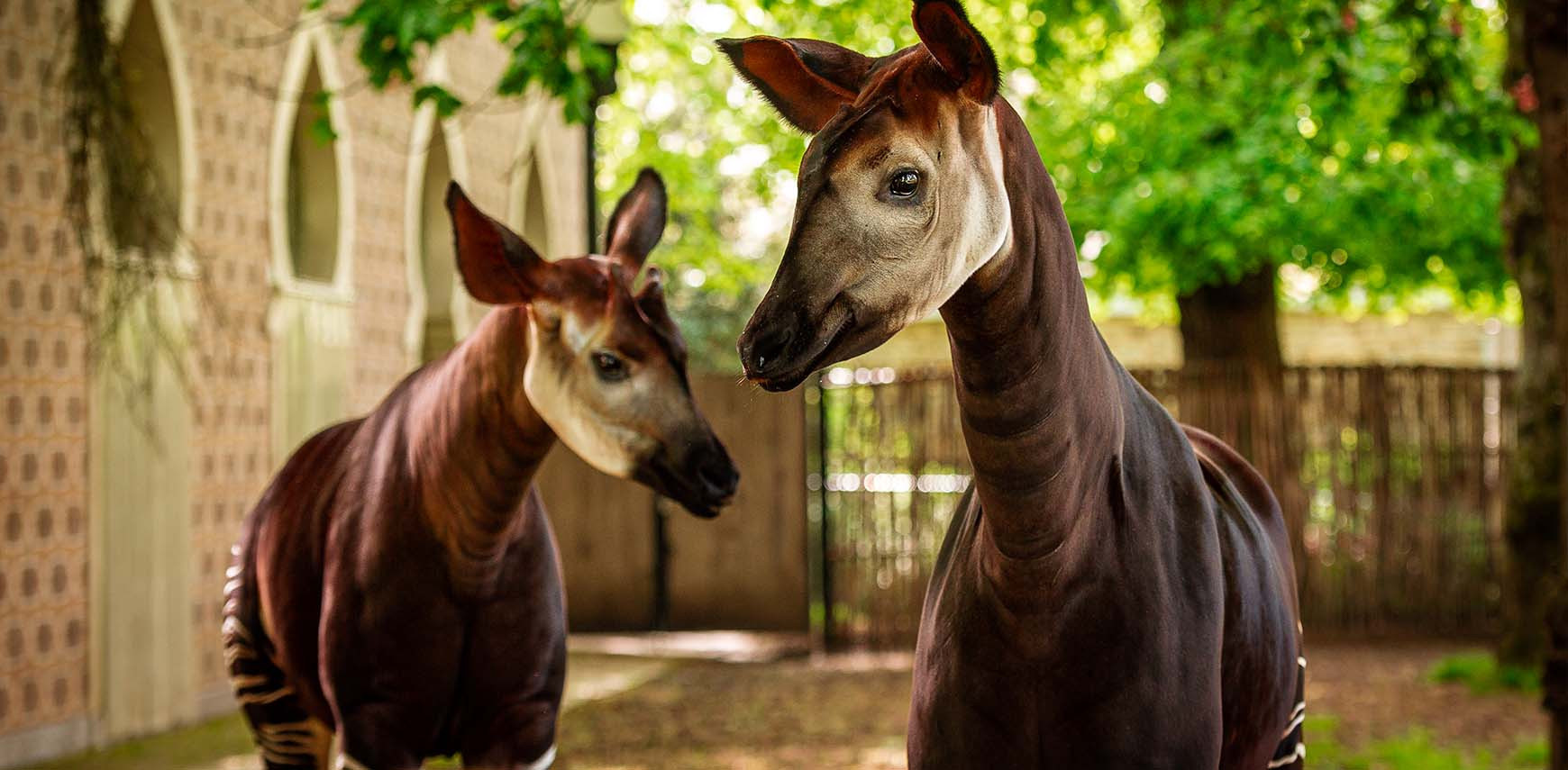Swipe right to match the stripes
Put an okapi male and female together, wait a while and before you know it they have a calf, right? Well, if only it were that simple. Sometimes things don't go as we expect when it comes to breeding with zoo animals. Oftentimes that is because we do not take into account that animals need to actually get to know their future partner.
To be able to breed with zoo animals potentially suitable partners sometimes need to be moved to another zoo for mating. The coordinator of a breeding programme determines which female would best mate with which male in order to minimize inbreeding and loss of genetic variation in the breeding population. In most cases, they check whether the potential partners are genetically suitable, and make sure they are not closely related and derive from the same bloodline. But in many animal species, it turns out that individual preferences of both partners are at least as important to be able to successfully breed.
Kicking and pushing
In okapis, for example, the introduction of two future partners sometimes leads to aggressive encounters, and hence to unsuccessful breeding attempts. A few years ago, a new okapi female from Frankfurt was introduced to our breeder male Bondo at Antwerp Zoo. Bondo showed quite a bit of aggressive behaviours like kicking and pushing, and Antonia prevented any mating attempts by demonstratively lying on the ground. And it appears such encounters are quite common in the okapi EEP.
To get an idea of the potential causes of such problems, Master student João Pedro Meireles of Utrecht University examined the Okapi studbook in detail, supervised by the EEP coordinator Sander Hofman and zoo-scientist Zjef Pereboom. João analysed a large amount of studbook records and caretaker notes to identify retrospectively which animals showed aggressive behaviours, which pairs had successfully produced calves, and how the husbandry practices were within the zoos where they were housed.
In addition, João interviewed okapi caretakers in various zoos throughout Europe to find out which additional possible husbandry-related factors might play a role in determining breeding success. For example, he looked at which animals were allowed to regularly spend time together in the same enclosure, which young males and females were well or less well socialized, or whether there were large age differences between the male and the female.
Husbandry is key
All the different factors and their effect on breeding success were then compared in a statistical model. The main conclusion of his analyses was that regular physical contact between both partners promotes familiarity: animals that were introduced to one another more regularly and were able to stay together for a while outside the female’s oestrus period, appear to do much better during mating moments without showing aggressive behavior and have a greater chance of successful mating.
The interviews with the okapi caretakers, however, suggested that caretaker bias might be a possible disruptive factor in the breeding success of okapis. For example, the suspicion that a particular okapi male might become aggressive to a female based on previous experience can be a reason for a caretaker to only allow a pair to get together for targeted breeding during the oestrus period. And this, in turn, might increase the chances of an aggressive encounter.
Socialization makes no difference
In addition, some zookeepers describe that individual okapis who were well socialized when they were young generally tend to be very calm animals and get used to unknown animals easily. In practice, it appears that such males often mate successfully. Despite this, well-socialized male okapis that had contact with other individuals next to their mothers were not significantly better at breeding or showed less aggression than other males.
The plan is now to use this knowledge now to tweak the way zoos keep their okapis, with the ultimate goal of increasing the breeding success of okapis in zoos. More specifically, this could be achieved by a recommendation to okapi caretakers to let potential breeding partners share an enclosure more often outside of the oestrus period.
Read more on this story here!

